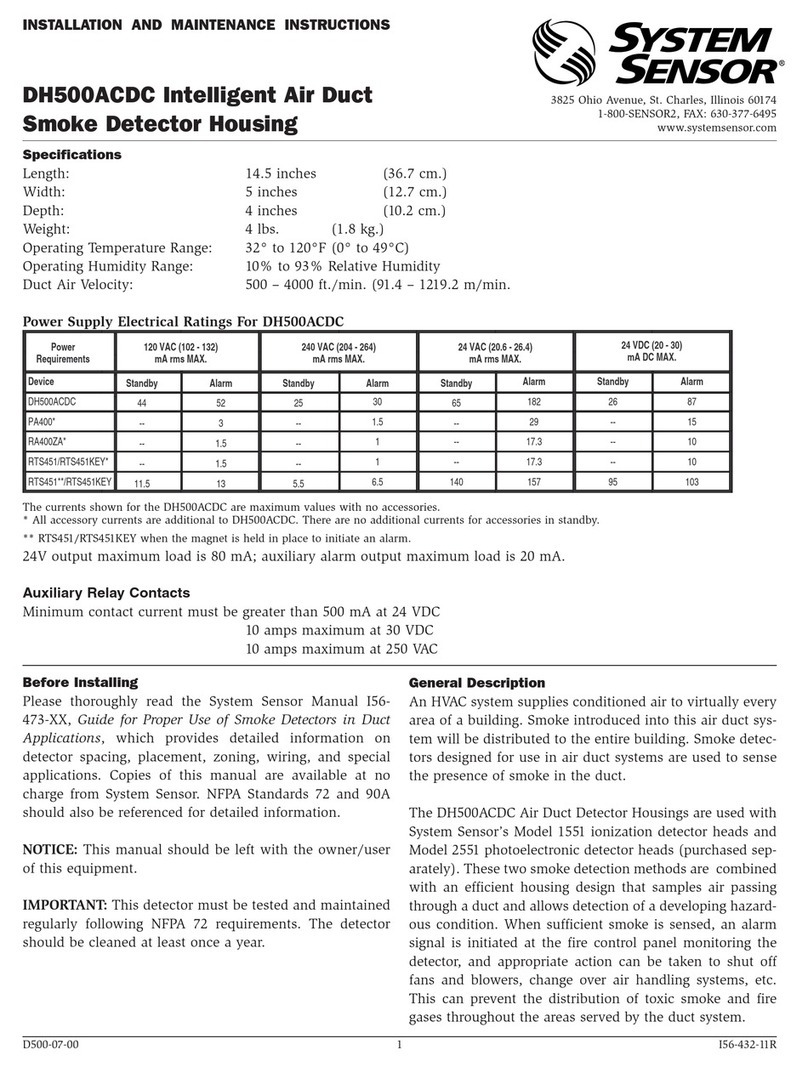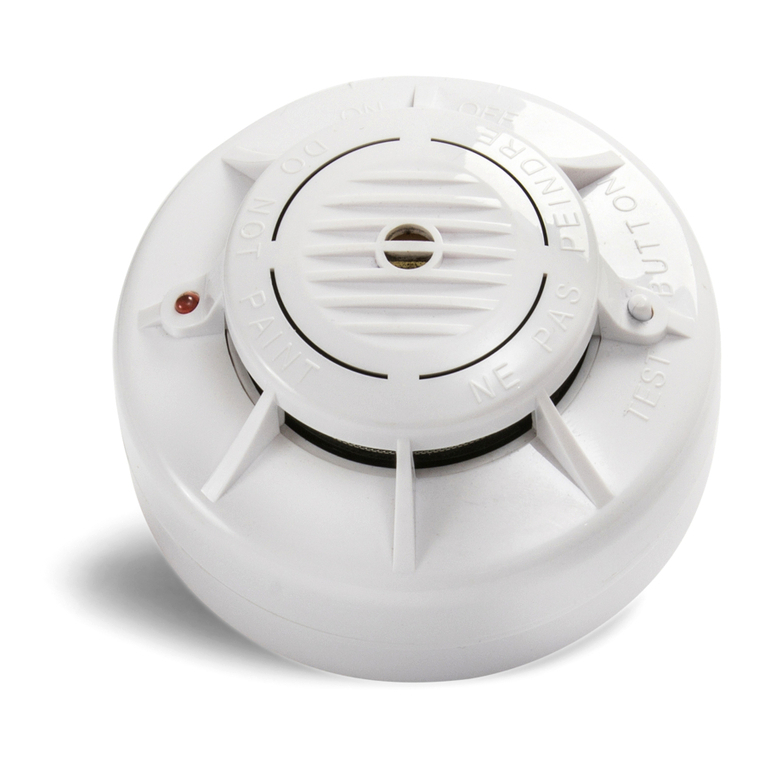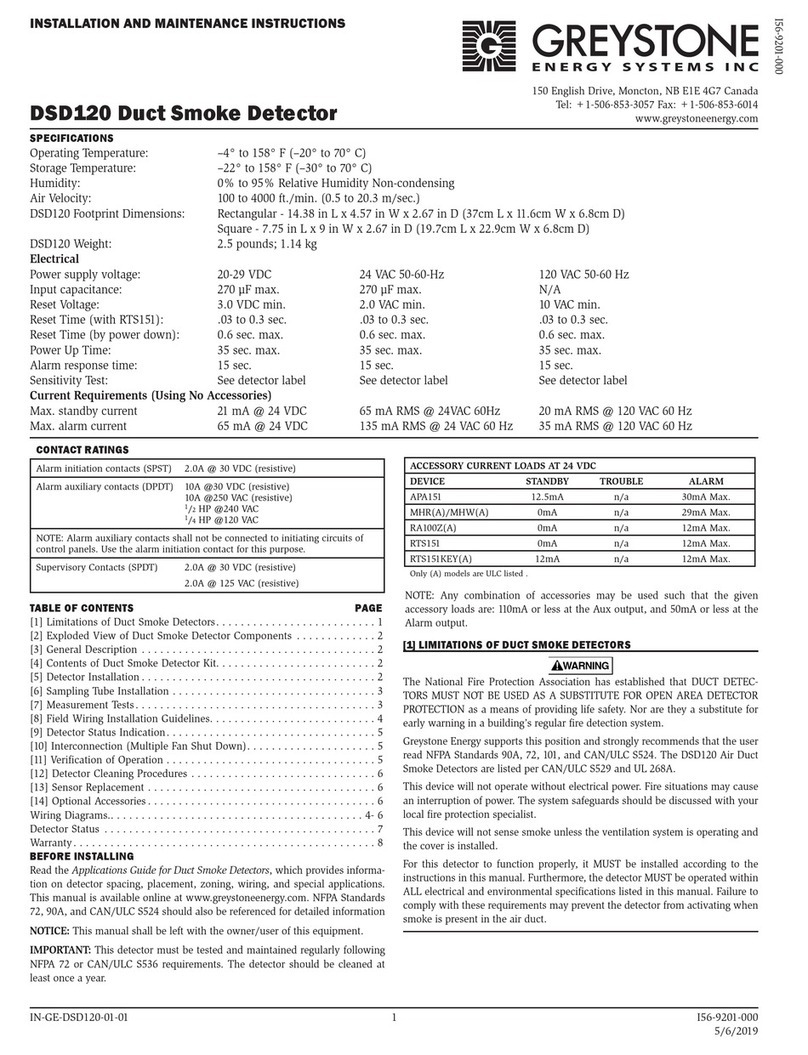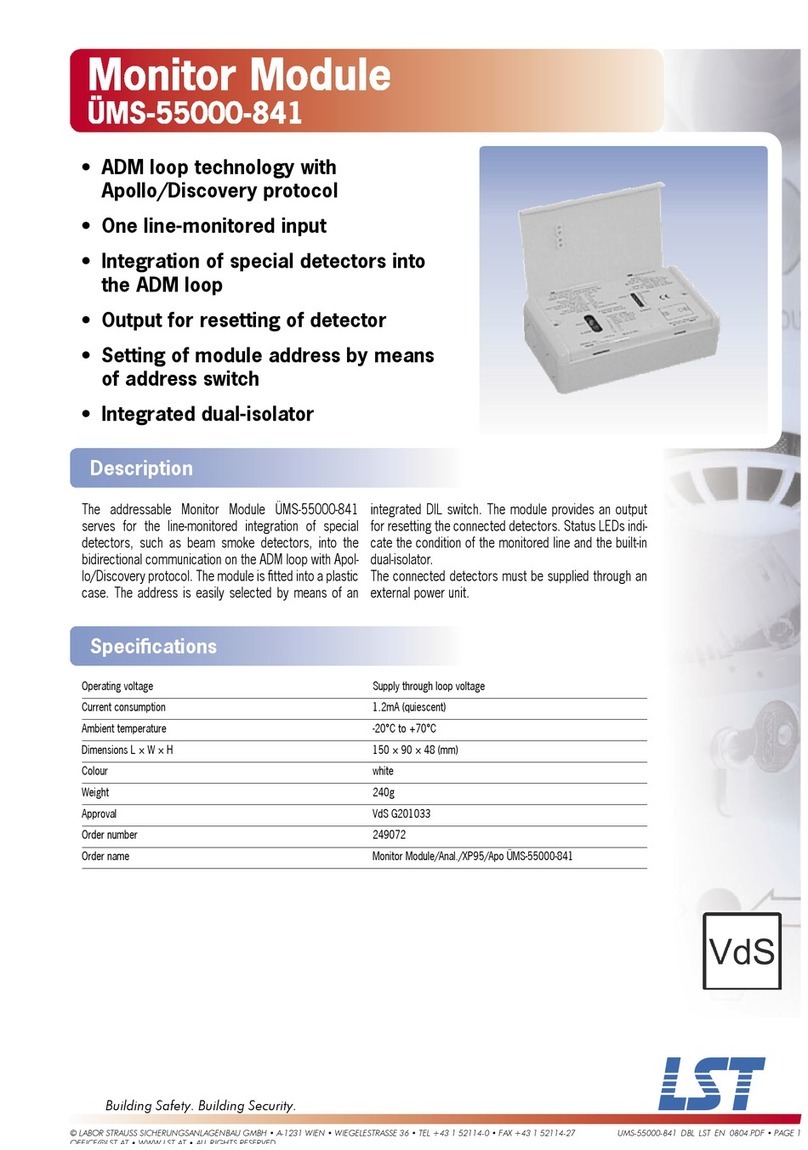
4
Trouble Condition Visual Indications Audible Indications Action:
Low Battery
Amber
LED
blinks
every
5
seconds
Chirp every 60 sec, voice every
30 sec: “Replace alarm.”
Voice stops after 5 mins.
*Remove, discharge, dispose unit, and
replace as soon as possible.
Fault Mode Chirp every 30 sec.
Voice every 30 sec: “Error, see
trouble shooting guide”
After 5 mins: no voice message
*See Cleaning Your Alarm section.
* Push Hush/Test button once to attempt to
reset the unit .
*Red LED will blink out an error code
(number of blinks) when Hush/Test button
is push/released once. Report the number
of blinks to customer service if needed.
End of Unit Life Double chirp every 30 sec.
First 5 mins: Voice every 30 sec:
“Replace alarm, press button
to silence.” Voice stops after
5 mins. After 7 days: Chirps
continue. Voice every 30 sec
for 5 mins: “Replace alarm.”
* Push/release Hush/Test button to
temporarily silence (see End of Unit Life
Hush Mode section below)
* Remove, discharge, dispose unit, and
replace as soon as possible.
End of Unit Life Hush
Mode (after push/
release Test/Hush
button during End
of Life)
Voice “Temporarily Silenced.”
End of Unit Life chirps silenced
for 24 hrs. (7 days after End
of Unit Life chirps begin, the
chirps cannot be silenced.)
* Remove, discharge, dispose unit, and
replace as soon as possible.
Network Error Chime every 30 secs. Voice
every 30 sec: “Connection Lost.
Press Button to Silence.”
After 5 min: no voice messages
(Note: network must have
3 or more alarms for voice
messages.)
* Push/release the Hush/Test button once to
silence for 24 hrs at a time.
*Red LED will blink out an error code (number
of blinks) when Hush/Test button is push/
released once. Report the number of blinks
to customer service if needed.
* Push and hold Hush/Test button until two
beeps are heard (approx 4 sec) and then
release the button to try to rejoin. Or reset
(section 7.3) and then rejoin (section 7.2).
*If error persists, remove, discharge, and
replace alarm as soon as possible.
Network Error Hush
(after button push
during Network Error)
Voice “Temporarily Silenced.”
4. Introduction, Product Features and Specifications
Introduction
This alarm detects products of combustion using photoelectric technology. Ten (10) years after the unit was
installed, this unit will automatically alert you that it is time to replace the unit. This is called “End of Unit Life”
mode. See Section 3 Troubleshooting Guide.
To help identify the date to replace the unit, a label has been affixed to the side of the alarm. Write the “Install date”
in the space provided, and then write in the “Replace by” date (10 years from initial power up) in permanent marker
on the label prior to installing the unit.
Product Features and Specifications:
•Temperature: Operating Range: 0°C to 40°C
•Humidity: Operating range: up to 93% RH non-condensing
•Audible Alarm: 85+ dB at 10 Feet (3 meters) with 3.0 to 3.5 KHz pulsing alarm, and with voice message “Fire!”
NOTE: This is not a CO alarm.
•Smoke Sensor: Photoelectric
•Voice message system
•Smoke Alarm SMART HUSH Control
•Ambient Light Sensing
•Powered by 3V DC non-replaceable sealed lithium battery
•Wireless interconnectable to other compatible alarms
•One large, user- friendly button
•LED safety light on model OG4000LDCS-WB to help illuminate escape pathways































